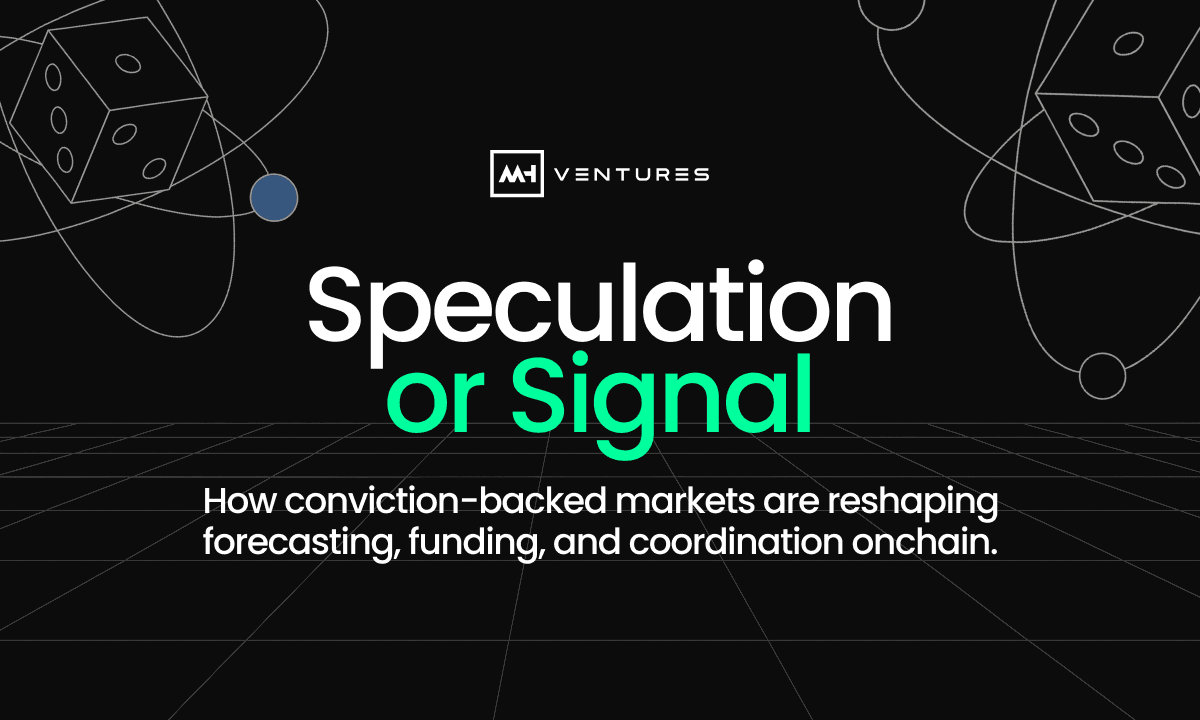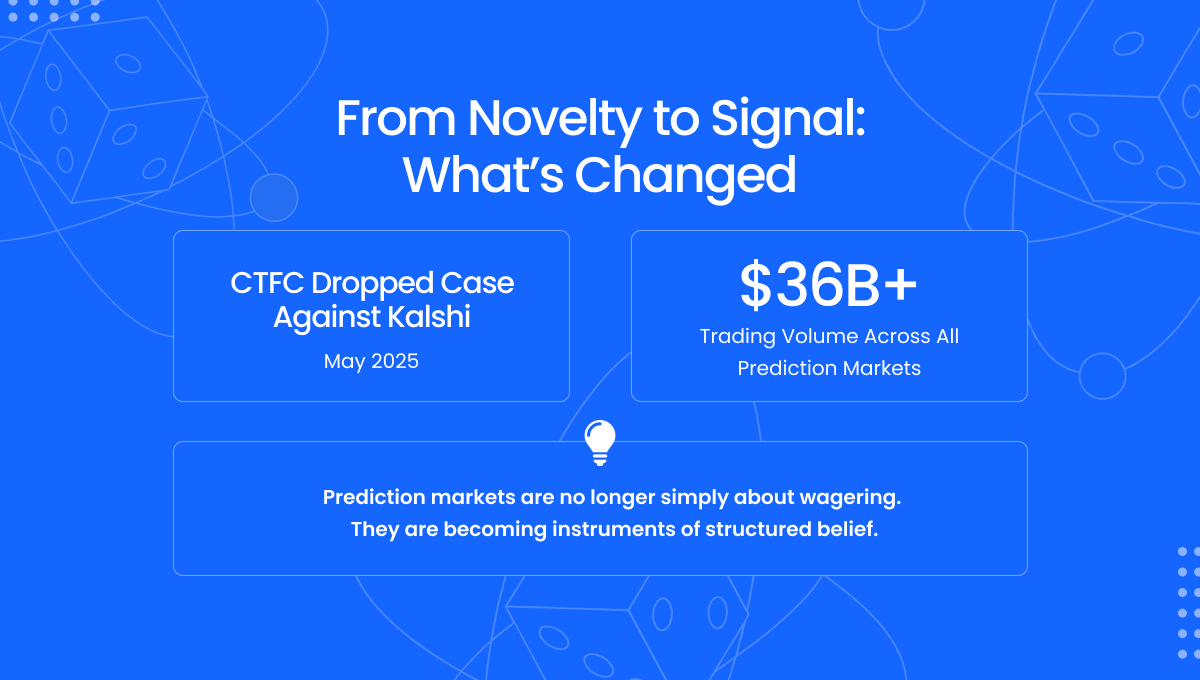
Research - November 4, 2025
Prediction Markets 2.0: From Fringe Gambling to Financial Infrastructure
Prediction markets are evolving from fringe bets into financial infrastructure, powering governance, forecasting, and onchain coordination. Where is this heading?
Back to Insights
[[divider]]
Markets That Price Belief, Not Assets
If you want to know what the market thinks about the next Fed hike, you look at the yield curve.
If you want to know what the market thinks about Solana's future, you look at SOL.
But what if you want to price uncertainty itself?
That’s where prediction markets come in, not as casinos, but as infrastructure. Tools for aggregating distributed knowledge and expressing belief through capital. Until recently, they were dismissed as novelty: low-volume apps for betting on elections, sports, or the latest celebrity headline.
That was the first wave.
The next wave looks very different. And very real.
[[divider]]
From Novelty to Signal: What’s Changed

Prediction markets aren’t new. But they’ve never worked like this.
In the last 12 months, the category has undergone a quiet transformation, structurally, legally, and culturally.
A few shifts you might have missed:
- The CFTC dropped its challenge against Kalshi, legitimizing binary event contracts in U.S. markets for the first time
- Polymarket has crossed into the mainstream, signing distribution partnerships and consistently leading crypto traffic charts during macro events
- Trading volume has persisted beyond elections and hype cycles, signaling product-market fit, not passing interest
- Investors, including top crypto funds, are treating PMs less like gambling and more like volatility infrastructure
Prediction markets are no longer simply about wagering. They are becoming instruments of structured belief.
[[divider]]
What They Actually Offer
At their core, prediction markets are mechanisms for aggregating distributed knowledge. The distinction isn’t that they reveal what people think, polls can do that. It’s that they reveal what people are willing to risk money on.
Conviction becomes the filter. Signal, not noise.
This structure makes them useful far beyond entertainment. Markets can now reflect probabilities on whether a team will ship on time, whether legislation will pass, or whether an upgrade will be adopted. And as these markets evolve, they start to play new roles, not just measuring belief, but shaping how capital and decisions are allocated.
[[divider]]
Where This Is Heading
Prediction markets are evolving from single-purpose betting tools into modular infrastructure that can plug into the broader crypto stack.
We’re seeing use cases emerge across:
- 🧠 Protocol Governance - Forecasting the likelihood of proposal success, token issuance events, or roadmap milestones.
Example: "Will this DAO deploy more than 50% of its treasury in 2025?"
- 📊 Financial Forecasting -Pricing macro events like CPI prints, ETF approvals, and rate changes, turning event risk into a tradable surface.
- 🧪 Research & Replication - Funding and validating scientific claims by letting the market bet on outcomes, a market for academic credibility.
- 👥 Social Coordination -Communities betting on project milestones, builder outcomes, or team launches.
Example: "Will X ship by July?" becomes a priced, public signal.
And increasingly, these markets aren’t siloed. They’re being integrated.
Imagine an L2 that auto-adjusts sequencer fees based on predicted throughput. Or a funding protocol that releases grants only if the prediction market prices succeed above a threshold. In these systems, markets become logic.
[[divider]]
What the First Wave Got Wrong
The early prediction markets, Augur, Gnosis, Omen, were built on the right idea, but the wrong assumptions.
They believed that if you built a market, participants would come. But without deep liquidity, clear incentives, fast resolution, and good UX, belief didn’t flow. The result: empty interfaces, stale markets, and disappointed communities.
What they missed was that markets don’t work because they exist, they work because someone needs to know the answer.
Today’s markets are more focused. They launch around high-stakes events. They subsidize liquidity. They obsess over UX and mobile-first interfaces. They resolve fast, or they don’t resolve at all.
The lesson is clear: information alone doesn’t move markets. Stakes do.
[[divider]]
What to look out for
We believe prediction markets are no longer a product category. They’re a market primitive, just like options, swaps, and perps before them.
This shift will create opportunities across three layers:

We’re not claiming to have placed bets on any one approach, yet. But we see the category maturing rapidly, and we’re preparing to engage with the protocols shaping that trajectory.
Because in a world where attention is cheap, the rarest thing is conviction backed by capital.
[[divider]]
Final Thought: The Market as the Interface
Every major market began as an abstraction.
Options were once seen as risky side bets. Derivatives were misunderstood. Stablecoins were a curiosity. But over time, as usage compounded and liquidity deepened, each became a pillar of modern finance.
Prediction markets are on that same path.
They start as toys. They end as infrastructure.
At MH Ventures, we believe the most important governance, forecasting, and capital allocation systems of the next decade won’t be built on consensus. They’ll be built on markets.
And the people who understand how to design them, not just use them, will shape how the future gets priced.
By Ron Swanson - MH Ventures ResearcherTue Nov 04 2025